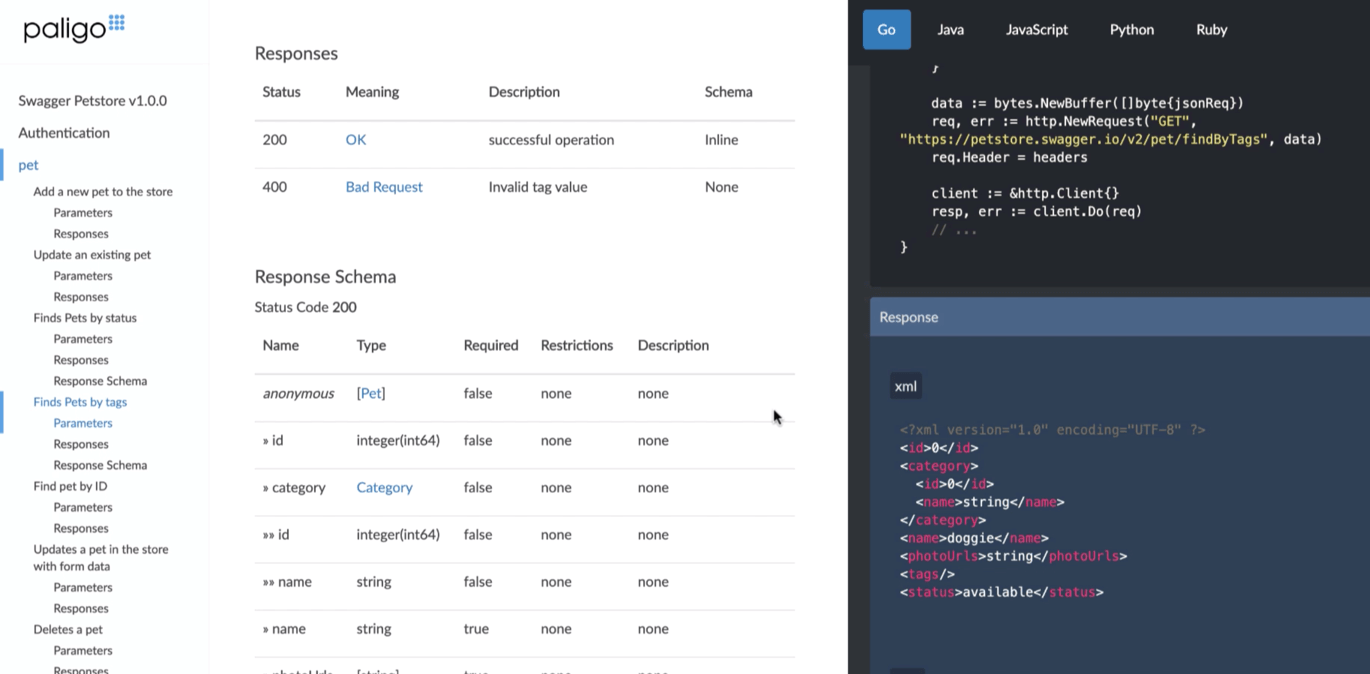Import Swagger OpenAPI
To use Swagger Open API content in Paligo, you can either embed it or Import Swagger OpenAPI. The best approach for you will depend on your requirements.
Importing is useful if you need to be able to format the Swagger Open API content in Paligo. With an import, you bring the Swagger Open API content into the Paligo database, where you have more control over the formatting, just like regular Paligo content. But you will need to import the content manually each time it is updated.
Embedding is useful if your Swagger Open API content exists elsewhere on the internet, external to Paligo. By embedding it, you add a "live" version of the content to a Paligo topic. However, there are some limitations with how you can format the content, as it is not in the Paligo database and so cannot be processed by Paligo during publishing.
In this section, we explain how to import Swagger Open API content. If you want to find out about embedding it, see Embed Swagger OpenAPI.
When you import OpenAPI content into Paligo, the content exists as topics in Paligo and you can edit them in the same way as any other Paligo topic. You can import the content and publish it as it is, or you can import it and then add other topics to it, depending on your needs. Imported OpenAPI content works especially well with Paligo's HTML API style layout, which provides a navigation panel, a content panel and a sample code panel where you can switch between code samples in different programming languages.
 |